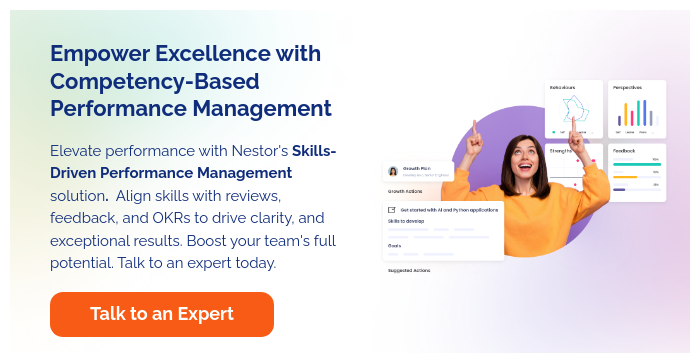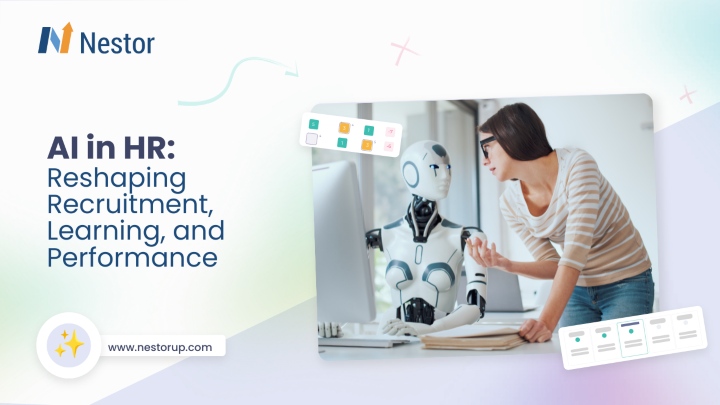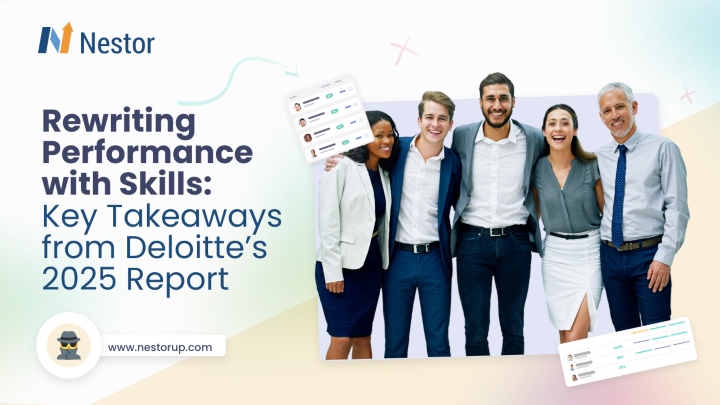
The workplace is on the cusp of a revolution, with artificial intelligence (AI) and automation technologies as the catalysts for change. A recent McKinsey report, “A New Future of Work: The Race to Deploy AI and Raise Skills in Europe and Beyond” , sheds light on the impending shifts in labor demand and the urgent need for workforce adaptation in Europe and the United States. The report focuses on nine major economies in the European Union, along with the United Kingdom and the United States, examining how technology, particularly the rise of generative AI, will reshape labor markets through 2030. As these economies grapple with evolving workforce dynamics, they face a dual challenge: harnessing the potential of AI while ensuring their workforce is equipped with the necessary skills for the future.
By 2030, both Europe and the United States could see a significant number of workers needing to transition to new occupations. This shift is expected to occur at an accelerated pace, particularly in Europe, where up to 12 million occupational transitions may be required – double the pre-pandemic rate. The United States, meanwhile, is projected to maintain its pre-pandemic pace with nearly 12 million transitions.
The ripple effects of this technological revolution are seismic, reverberating through individual careers, entire industries, and the very fabric of our economies and societies. As we peel back the layers of the report’s findings, we uncover the future of work, a landscape where AI and automation are not just changing jobs – they’re redefining the very nature of work itself.
The Impact of AI and Automation and a Crisis of Labor Shortage
The rise of AI and automation is reshaping the employment landscape in Europe and the United States at an unprecedented pace. This technological shift is occurring alongside other significant trends, including efforts to achieve net-zero emissions, an aging population, increased infrastructure spending, and growth in e-commerce.
By 2030, approximately 27% of current work hours in Europe and 30% in the United States could be automated, a process accelerated by the advent of generative AI.
— McKinsey report - A New Future of Work: The Race to Deploy AI and Raise Skills in Europe and Beyond
Simultaneously, both regions are experiencing unprecedented labor market tightness, with unfilled positions on the rise and unemployment at historically low levels. This paradoxical situation of automation potential and labor shortages presents a complex challenge for business leaders and policymakers. On one hand, automation offers the potential to boost productivity and fill gaps in the workforce. On the other, it threatens to displace workers who may not have the skills required for emerging roles.
The impact of these changes will be felt unevenly across different sectors and job roles. While demand for workers in STEM-related fields, healthcare, and other high-skill professions is expected to rise, occupations such as office workers, production workers, and customer service representatives may see declining demand. This shift underscores the need for targeted interventions to support workers in transitioning to new roles and acquiring new skills.
Moreover, the adoption of AI and automation technologies is likely to reshape the nature of work itself. Many jobs will not be entirely automated but will instead see significant changes in the tasks they involve. This evolution demands a workforce that is not only technically skilled but also adaptable and capable of continuous learning.
The labor shortage crisis adds another layer of complexity to this scenario. As businesses struggle to fill current vacancies, they must also prepare for a future where the skills they need may be dramatically different. This dual challenge requires a delicate balance between addressing immediate workforce needs and investing in long-term skill development and automation strategies.
Businesses Will Need a Major Skills Upgrade
As new technologies emerge and reshape industries, the demand for new workforce skills intensifies. The McKinsey Global Institute Future of Work model categorizes 25 workforce skills into five groups: physical and manual, basic cognitive, higher cognitive, social and emotional, and technological. The model projects significant shifts in skill demand by 2030, painting a picture of a dramatically altered skills landscape.
The demand for social and emotional skills could rise by 11% in Europe and 14% in the United States.
— McKinsey report - A New Future of Work: The Race to Deploy AI and Raise Skills in Europe and Beyond
This increase reflects the growing importance of uniquely human capabilities such as empathy, leadership, and interpersonal communication in an increasingly automated world. Skills that are both heavily used today and expected to significantly increase in demand include advanced IT, technology engineering, advanced data analytics, and creativity. The rising importance of these skills underscores the need for a workforce that is not only technically proficient but also innovative and adaptable.
However, businesses may face even greater challenges in acquiring skills that are less used today but predicted to be in high demand by 2030. These include critical thinking, complex information processing, product design, scientific research, and most social and emotional skills. The projected demand for these skills highlights the importance of developing a workforce capable of higher-order thinking and complex problem-solving.
Business leaders are sounding the alarm: today’s skills shortage is just the tip of the iceberg. The skills set to skyrocket in demand by 2030 are the very ones in critically short supply right now. It’s a perfect storm brewing on the horizon, threatening to capsize unprepared companies. But this looming crisis isn’t just a threat—it’s a call to action. We’re not talking about a minor tune-up; we’re looking at a complete overhaul of how we approach skills development. The future demands nothing less than a skills revolution.

This skills transformation also presents an opportunity for businesses to reimagine their workforce strategies for the future of work. By investing in their employees’ skill development, companies can not only prepare for future needs but also improve employee engagement and retention. The message is clear: adapt or be left behind. In this high-stakes game of skills and strategy, who will emerge as the winners of tomorrow’s talent wars?
Policy and Strategic Imperatives for the Future of Work
To navigate this changing landscape, both governments and businesses must take decisive action. The scale and pace of the changes brought about by AI and automation require a coordinated response from all stakeholders in the economy.
For policymakers, the focus should be on creating an environment that fosters innovation while supporting workforce transition. Key policy imperatives include:
- Investing in education and training programs that align with future skill demands: This may involve reforming educational curricula to emphasize STEM subjects, critical thinking, and adaptability. It could also include creating and funding lifelong learning initiatives to support continuous skill development throughout workers’ careers.
- Developing policies that encourage lifelong learning and skill development: This could involve tax incentives for businesses that invest in employee training, or individual learning accounts that provide workers with resources for ongoing education.
- Creating safety nets for workers displaced by automation: As some jobs become obsolete, it’s crucial to have systems in place to support affected workers. This could include unemployment benefits tailored to long-term transitions, job search assistance, and retraining programs.
- Incentivizing businesses to invest in employee reskilling and upskilling: Governments could offer tax breaks or grants to companies that demonstrate a commitment to developing their workforce’s skills.
- Addressing potential inequality: As AI and automation may disproportionately affect certain demographic groups or regions, policies should be designed to ensure an inclusive transition.
For businesses, key strategies include:
- Assessing the impact of AI and automation on their workforce: Companies need to conduct thorough analyses of how emerging technologies will affect their operations and workforce needs.
- Developing comprehensive reskilling and upskilling programs: Based on their assessment, businesses should create targeted training programs to equip their workforce with the skills needed for the future.
- Redesigning work processes to optimally combine human skills with AI capabilities: This involves rethinking job roles and workflows to leverage the strengths of both human workers and AI systems.
- Implementing ethical AI practices: As AI becomes more prevalent, businesses must ensure they’re using these technologies responsibly and considering the broader societal impacts.
- Collaborating with educational institutions: Partnerships between businesses and schools can help ensure that educational programs are aligned with industry needs.
The successful implementation of these policies and strategies will require close collaboration between governments, businesses, educational institutions, and workers themselves. It will also demand a long-term perspective, as the full impact of these changes will unfold over years and decades.
Future of Work: Sectors Affected by AI
The impact of AI and automation will vary significantly across different sectors, reshaping industries and redefining job roles. Let’s examine four key sectors in greater depth:
Wholesale and Retail Trade:
Europe’s service sector faces significant transformation, with projections indicating that approximately 2.8 million workers may need to transition to new occupations by 2030. The advent of generative AI is likely to replace traditional roles like office clerks and executive secretaries with advanced digital productivity solutions. As e-commerce continues its upward trajectory, it will reshape conventional retail, boosting demand for logistics and digital marketing expertise while potentially reducing the need for in-store sales personnel. Automation is expected to play an increasingly prominent role in various aspects of the sector, including inventory management, customer service (via AI-powered chatbots and virtual assistants), and tailored marketing strategies. However, this shift will also create new opportunities for professionals who can effectively manage AI systems and provide crucial human interaction in high-value customer engagements.
Financial Services:
By 2030, generative AI is set to transform financial services, potentially reducing traditional labor demand. While AI already assists in fraud detection, risk assessment, and algorithmic trading, it’s expected to soon tackle more complex tasks like financial advising and loan approvals. Roles in data entry, basic accounting, and routine customer service may face automation. But don’t write off human expertise just yet. As AI reshapes the financial landscape, a new breed of finance professional will rise, who can manage AI systems, interpret complex financial data, and provide strategic advice. The sector may also see growth in cryptocurrency and blockchain-related roles.
Manufacturing:
While demand for some roles may increase, there could be a net decline in employment demand in Europe’s manufacturing sector by 2030. The sector may see a decline in demand for basic cognitive skills, physical and manual skills, and higher cognitive skills, highlighting the increasing replaceability of these skills due to automation and AI advancements.
Advanced robotics and AI will continue to transform production lines, potentially reducing demand for traditional factory workers. However, there will be increased demand for workers who can program, operate, and maintain these advanced systems. The sector may also see growth in roles related to sustainable manufacturing practices and the circular economy.
Healthcare:
This sector in Europe is projected to experience the largest growth in labor demand by 2030, driven by an aging population and advancements in medical technology. AI is expected to play a significant role in diagnostics, drug discovery, and personalized medicine.
While AI may automate some administrative tasks and assist with diagnostics, the human element in healthcare will remain crucial. There will likely be increased demand for nurses, specialized care providers, and professionals who can interpret and act on AI-generated health insights. The sector may also see growth in roles related to telemedicine, health data analysis, and AI-assisted medical research.
In all these sectors, the key trend is a shift towards roles that involve working alongside AI systems, interpreting AI outputs, and applying uniquely human skills such as empathy, creativity, and complex problem-solving. This underscores the importance of developing a workforce that is not only technically proficient but also adaptable and skilled in areas where humans continue to outperform machines.
The Future of Work: Embracing a Human-Centric Redesign
As AI reshapes the workplace, it’s crucial to maintain a human-centric approach to ensure that technological advancements enhance rather than diminish the role of human workers. This involves several key considerations:
Prioritizing Employee Well-being:
As the pace of technological change accelerates, it’s essential to consider the psychological impact on workers. Companies should focus on creating supportive work environments that help employees adapt to new technologies without undue stress. This could involve:
- Providing clear communication about how AI will be implemented and its impact on job roles
- Offering mental health support and resources to help workers manage change-related stress
- Ensuring that AI implementation doesn’t lead to excessive workloads or unrealistic performance expectations
Using Generative AI as a Learning Tool:
Generative AI offers exciting possibilities for personalizing and enhancing skill acquisition. It can potentially reshape training from generic offerings to personalized, interactive journeys that address specific skills gaps and prepare employees for future challenges. This could involve:
- Creating AI-powered learning platforms that adapt to each employee’s learning style and pace
- Using AI to identify skill gaps and recommend relevant training modules
- Leveraging generative AI to create realistic simulations for hands-on learning experiences
Balancing Human Strengths with AI Capabilities:
The goal should be to create work environments where AI augments human capabilities rather than replacing them entirely. This involves identifying areas where humans excel and designing roles that leverage these strengths alongside AI. Key considerations include:
- Focusing human workers on tasks requiring empathy, creativity, and complex problem-solving
- Using AI for data analysis and pattern recognition to inform human decision-making
- Designing workflows that allow for seamless collaboration between humans and AI systems
Fostering Creativity and Innovation:
As AI takes over more routine tasks, there’s an opportunity to refocus human energy on creative and innovative endeavors. Companies should create spaces and processes that encourage:
- Cross-functional collaboration and idea sharing
- Experimentation and calculated risk-taking
- Recognition and rewards for innovative thinking
Ethical Considerations:
As AI becomes more prevalent in the workplace, it’s crucial to consider the ethical implications. This includes:
- Ensuring transparency in how AI systems make decisions
- Addressing potential biases in AI algorithms
- Protecting employee privacy and data
- Considering the broader societal impact of AI-driven workforce changes
Continuous Feedback and Adaptation:
The integration of AI into the workplace should be an iterative process, with ongoing assessment and adjustment. This involves:
- Regular check-ins with employees to understand their experiences with AI systems
- Monitoring the impact of AI on productivity, job satisfaction, and work quality
- Being willing to adjust implementation strategies based on feedback and outcomes
By adopting a human-centric approach to work redesign, companies can harness the power of AI while creating more fulfilling and productive work environments. This approach recognizes that the true potential of AI lies not in replacing humans, but in creating powerful human-AI collaborations that drive innovation and productivity.
Navigating the Future of Work
As we look ahead, the McKinsey report outlines four key priorities for companies to navigate the AI-driven transformation of work. First and foremost, leaders need to understand the potential of AI and generative AI in augmenting and automating work. This involves conducting thorough assessments of current work processes, staying informed about the latest AI developments, and engaging with AI experts to understand the capabilities and limitations of different AI technologies. Piloting AI projects can provide valuable hands-on experience and insights.
Secondly, companies should plan their strategic workforce shift towards AI readiness. This includes developing a clear vision of how AI will transform the organization over the next 5-10 years and creating a roadmap for AI implementation that aligns with business goals while considering the human impact. Identifying which roles are likely to be automated, augmented, or created by AI is crucial, as is developing strategies for reskilling and redeploying workers whose roles may be affected.
The third priority is to focus on people development. Companies need to strengthen their capabilities to identify, attract, and recruit future AI and generative AI leaders in an increasingly competitive market. This involves updating talent acquisition strategies, developing partnerships with educational institutions, implementing internal training programs, and fostering a culture that attracts top AI talent by emphasizing innovation and continuous learning.
Lastly, leaders should pursue their own education on automation technologies. This includes participating in AI-focused executive education programs, engaging with AI thought leaders and practitioners, and gaining firsthand experience with AI tools. Encouraging a culture of continuous learning throughout the organization’s leadership is essential.
In addition to these priorities, companies should also consider the ethical implications of AI implementation. Developing clear guidelines for the ethical use of AI within the organization, ensuring AI systems are transparent, fair, and accountable, and considering the broader societal impact of AI implementation are all crucial aspects of responsible AI adoption.
A collaborative approach is also key to successfully navigating the future. Fostering partnerships with other companies, academic institutions, and government bodies can facilitate knowledge sharing and resource pooling. Participating in industry consortia to develop standards and best practices for AI implementation can also be beneficial.
Finally, successful navigation of the AI-driven future requires balancing short-term and long-term goals. Companies need to address immediate business needs while also investing in long-term AI capabilities. Striking a balance between quick wins and more ambitious, transformative AI projects is crucial for sustainable success.
By focusing on these priorities and considerations, companies can position themselves to thrive in the AI-driven future of work. This approach recognizes that successful AI implementation is not just about technology, but about people, processes, and culture. It’s about creating a future where human potential is amplified by artificial intelligence, leading to unprecedented levels of innovation and productivity.
Final Thoughts
The future of work, as illuminated by the McKinsey report, is one of significant change and unprecedented opportunity. While the challenges of workforce transitions and skill gaps are substantial, they are not insurmountable. By embracing technological advancements, prioritizing skill development, and maintaining a human-centric approach, businesses and economies can thrive in this new era.
The AI revolution isn’t just a technological sprint—it’s a marathon that’s reshaping the very essence of work. It’s important to recognize that AI is a tool, not a replacement for human workers. While AI will automate many tasks, its true potential lies in augmenting human capabilities. The most successful organizations will be those that effectively combine human and artificial intelligence, leveraging the strengths of each to create powerful synergies.
Sure, the road ahead may have its bumps and detours, but it’s paved with golden opportunities. We’re standing on the brink of a renaissance in industry and job creation. By embracing these changes and proactively preparing for them, we can shape a future of work that leverages the best of both human and artificial intelligence. As we look to the future, it’s clear that the world of work will be dramatically different from what we know today. However, this transformation offers us the chance to reimagine not just how we work, but how we learn, innovate, and create value in society.
For a more comprehensive understanding of these trends and their implications, readers are encouraged to explore the full McKinsey report. It offers detailed insights and data-driven projections to inform strategy and policy in this rapidly evolving landscape, providing valuable resources for business leaders, policymakers, educators, and individuals looking to navigate and thrive in the AI-driven future of work.












